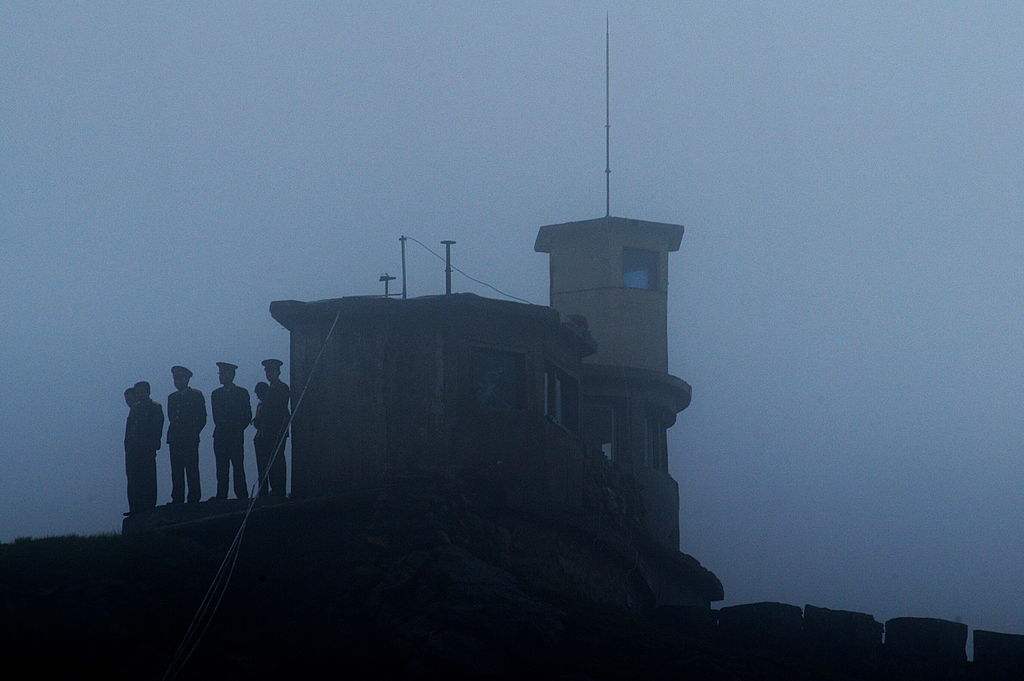Local developments and international tensions contribute to India–China border standoff
Posted By Mohammed Ayoob on June 3, 2020 @ 15:00

Many local factors have contributed to the face-off between Indian and Chinese forces in Ladakh.
Western Ladakh borders Pakistan-occupied Kashmir, Gilgit and Baltistan, where China has invested hugely its economic corridor project with Pakistan under the Belt and Road Initiative. China’s apprehension about Indian designs on the territory has been accentuated by recent comments [1] by Indian leaders, including External Affairs Minister Jaishankar, that India expects to have ‘physical jurisdiction’ over it ‘one day’.
Ladakh also borders Tibet and Xinjiang, the turbulent peripheries of China, and Beijing is apprehensive of Indian moves supported by the US that may threaten its control over these regions.
The trigger for the current face-off was China’s opposition to India’s laying a key road in the finger area around Pangong Lake and constructing another connecting Darbuk–Shayok–Daulat Beg Oldie road in Galwan Valley. China is also laying a road in the finger area, which India finds objectionable. According to Indian sources, China has deployed 5,000 heavily armed additional troops to the area and India has responded in kind. Both militaries have also moved in [2] heavy equipment and weaponry, including artillery and combat vehicles, to their rear bases close to the disputed areas in eastern Ladakh.
Indian and Chinese forces in Ladakh are separated on the basis of a Line of Actual Control, drawn at the end of the 1962 war but still contested in some areas. India argues that Chinese forces have violated this arrangement. Bilateral moves at the military and diplomatic levels are on to defuse the situation, but both sides have rejected [3] US President Donald Trump’s offer to mediate the dispute.
However, most observers believe that not only local factors have led to China’s move in Ladakh. Beijing is feeling increasingly beleaguered globally and regionally and has embarked on a strategy with several goals. It assumes that foreign adventurism cloaked in the garb of ultranationalism can shore up the Chinese Communist Party’s rule at home. While the authoritarian regime’s legitimacy rests primarily on its economic performance, it is now facing the prospect of a severe decline in the country’s GDP.
Simultaneously, creating a crisis with neighbours can divert international opprobrium at a time when China is facing heavy criticism, including from Australia, because of its failure to notify the world of the coronavirus during the crucial early weeks when it could have been more easily contained.
In the face of such criticism, the Chinese regime is increasingly using jingoistic jargon to build up domestic support. In a recent speech, President Xi Jinping exhorted the armed forces [4] to ‘prepare for war’ in order to ‘resolutely safeguard national sovereignty’ and ‘the overall strategic stability of the country’.
China’s relations with the US have been going downhill since soon after Trump was elected, which has unnerved Chinese leaders despite their disclaimers. Trade disputes have led to repeated threats [5] by Trump that he would unleash a trade war against China. Beijing has deliberately eroded Hong Kong’s special status and is suppressing its pro-democracy movement, leading to much criticism from the US administration and in Congress. US Secretary of State Mike Pompeo has told Congress that Hong Kong is no longer autonomous [6] from China and no longer merits special treatment under US law.
Differences over Taiwan have added to US–China tensions. The CCP sees Taiwan as a breakaway province and it considers the US to be the primary impediment to the island’s integration with China. The Trump administration has significantly increased American support to Taiwan with arms sales and laws, such as the Taiwan Allies International Protection and Enhancement Initiative (TAIPEI) Act to help Taiwan deal with pressure from China. In response, China has stepped up [7] its military activity around Taiwan, further accentuating the tensions.
Above all, US–China rivalry in the South China Sea appears to be the most serious potential flash point that could start a conflagration. Over the past decade, China has vigorously advanced its territorial claims there by militarising islands it controls and vociferously contesting claims by other states and impeding their attempts to access territories that they claim.
So far China has acted cautiously to prevent these moves from triggering a serious confrontation with the US, but that might change if it feels under greater pressure internationally.
Washington has a strong interest in preventing Beijing from asserting control over the South China Sea, as maintaining free and open access to this waterway is important to the US for economic reasons. It also has defence treaty obligations to the Philippines, which has been in the forefront of contesting Chinese claims. For China, the ability to control [8] the South China Sea would be a major step in threatening the US position as the foremost power in the Indo-Pacific region.
Increased Chinese adventurism born out of its inability to respond adequately to external criticism and to control domestic discontent could result in an escalation of US–China tensions in the South China Sea.
If that happens, the India–China confrontation over road building and movement of troops close to the Line of Actual Control in Ladakh could become a sideshow in a much larger ‘great game’ played out in Asia between the US and China.
Article printed from The Strategist: https://www.aspistrategist.org.au
URL to article: https://www.aspistrategist.org.au/local-developments-and-international-tensions-contribute-to-india-china-border-standoff/
URLs in this post:
[1] comments: https://timesofindia.indiatimes.com/india/well-have-physical-jurisdiction-over-pok-one-day-s-jaishankar/articleshow/71175845.cms
[2] moved in: https://www.ndtv.com/india-news/india-china-bring-in-heavy-weapons-to-bases-near-eastern-ladakh-report-2238383
[3] both sides have rejected: https://www.hindustantimes.com/india-news/india-china-reject-us-bid-to-mediate-on-border-issue/story-nZWAd5QJAkzqzpuAjMwsiM.html
[4] exhorted the armed forces: https://www.hindustantimes.com/world-news/prepare-for-war-china-s-xi-jinping-tells-army-to-thwart-coronavirus-impact-on-national-security/story-dfT3GPJWBXTPhzEASBna0L.html
[5] repeated threats: https://www.theguardian.com/business/2020/may/01/global-markets-donald-trump-us-china-trade-war-coronavirus-covid-19
[6] no longer autonomous: https://www.bbc.com/news/world-us-canada-52824839
[7] stepped up: https://www.reuters.com/article/us-taiwan-usa/us-increases-support-for-taiwan-china-threatens-to-strike-back-idUSKBN21E0B7
[8] ability to control: https://www.cfr.org/blog/rising-tensions-south-china-sea
Click here to print.